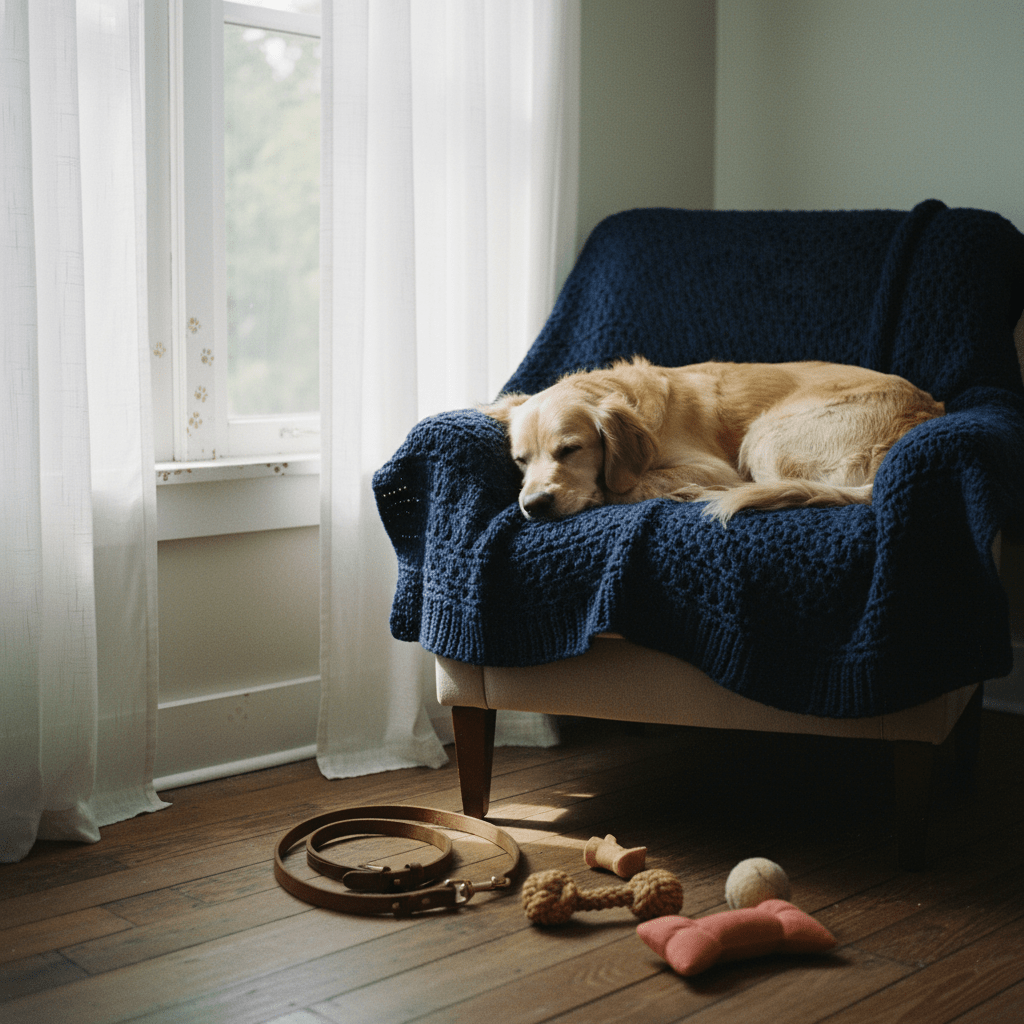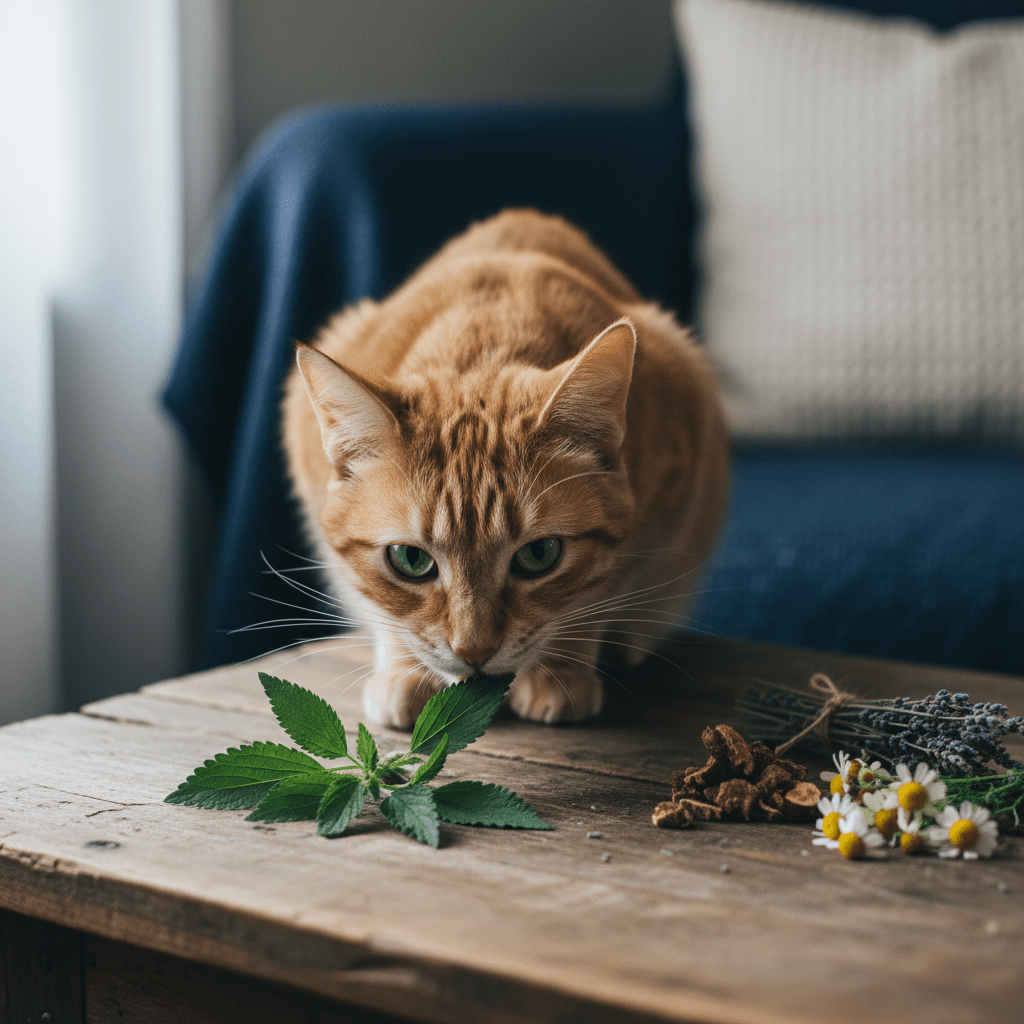Key Takeaways
- Dogs feel loneliness and show it through their body language and behaviors.
- Lonely dogs cannot verbalize their feelings like humans do.
- Signs of loneliness in dogs include destructive behavior, excessive barking, and withdrawal.
- Understanding canine loneliness is key to addressing their emotional needs.
Table of Contents
- Understanding Canine Loneliness
- Proven Solutions for Lonely Dogs
- Addressing Specific Loneliness Behaviors
- Comparing Companionship Solutions
- Natural Support for Emotional Wellness
- Creating a Supportive Environment
- Long-Term Strategies for Preventing Loneliness
- When to Seek Additional Support
- Natural Support for Anxious, Lonely Dogs
- Building Lasting Confidence in Your Dog
- Recognizing When Extra Support is Essential
- The Power of Canine Community
- Tracking Your Dog's Emotional Growth
Understanding Canine Loneliness
Dogs experience a full spectrum of emotions, including loneliness, which they express through body language, vocalizations, and behavioral changes. Unlike humans who can verbalize their feelings, lonely dogs communicate distress through destructive behavior, excessive barking, or withdrawal from normal activities.
The most telling signs include separation anxiety symptoms like chewing furniture, scratching doors, or having indoor accidents despite being house-trained. You might also notice repetitive behaviors like excessive licking, shadowing you constantly when you're home, or a decreased interest in food and play.
Loneliness typically stems from extended owner absence, loss of a companion pet, or major environmental changes like moving homes. Dogs are pack animals by nature, when their social needs aren't met, their mental health suffers just as ours would in isolation. For dogs who struggle with anxiety and stress, Peaceful Paws offers targeted support for dogs dealing with stress, restlessness, and hypersensitivity. Additionally, if your dog's loneliness is accompanied by skin or coat issues due to stress, consider the Dog Healthy Skin & Coat Remedy to help maintain their overall well-being.
Proven Solutions for Lonely Dogs

Gradual desensitization training forms the foundation of helping lonely dogs cope with separation. Start with very brief departures, just 30 seconds, then slowly increase the duration as your dog remains calm. This builds confidence that you will return.
Creating mental stimulation before you leave works remarkably well. Hide treats around the house, provide puzzle toys, or rotate their toy selection weekly to maintain novelty. A tired mind is less likely to focus on your absence. For more ideas on keeping your dog engaged indoors, check out how to exercise dogs indoors.
Natural Support for Separation Anxiety: For dogs dealing with stress and restlessness during alone time, Peaceful Paws supports dogs with hypersensitivity and anxious behavior. These gentle pellets help promote a calm demeanor without altering your dog's personality, making daily departures easier for both of you.
Environmental aids like pheromone diffusers mimic natural calming scents, while leaving a piece of your clothing nearby provides comfort through familiar smells. Background noise from classical music or talk radio can mask outside sounds that trigger anxiety.
Best Approaches to Introducing a New Pet
Adding a second dog requires careful consideration of your current pet's age, size, and temperament. Older dogs may prefer calmer companions, while high-energy breeds often thrive with similarly active playmates.
The introduction process should happen gradually over several days. Start with parallel walks where dogs can see each other but remain focused on you, then progress to supervised indoor interactions in neutral spaces before allowing unsupervised time together.
Addressing Specific Loneliness Behaviors
Destructive behavior often represents redirected anxiety energy. Instead of punishment, redirect this energy into positive outlets like chew toys specifically designed for powerful jaws, or create designated digging areas in your yard where destruction becomes acceptable play.
Excessive barking responds well to "quiet" command training paired with high-value treats. Remove visual triggers by closing curtains, and consider white noise machines to muffle external sounds that prompt vocalizations.
Loss of appetite during separation requires both nutritional support and stress reduction. Puzzle feeders make mealtime mentally engaging, while maintaining consistent feeding schedules provides security. Dogs experiencing loneliness often eat better when their emotional needs are addressed alongside their physical ones.
Comparing Companionship Solutions
Single-dog households offer focused attention and lower costs, but may struggle with loneliness when owners work long hours. Multi-dog families provide constant companionship but require double the resources and careful management of pack dynamics.
| Solution | Best For | Time Commitment | Social Benefits |
|---|---|---|---|
| Dog Daycare | High-energy, social dogs | Drop-off/pickup only | Multiple dog interactions |
| Dog Walking Service | Older or less social dogs | 30-60 minutes daily | Human bonding, outdoor stimulation |
| Second Dog | Dogs who enjoy canine company | Full-time commitment | 24/7 companionship |
Dog daycare works best for naturally social dogs who thrive in group settings, while professional dog walkers provide one-on-one attention that shy or senior dogs often prefer. The key is matching the solution to your dog's specific personality and energy level.
Natural Support for Emotional Wellness

Pet Relax - Gentle Emotional Balance
Best for: Dogs showing signs of distress when left alone, including destructive behavior, excessive barking, or withdrawal.
This homeopathic formula supports your dog's natural ability to maintain emotional balance during stressful situations. Unlike prescription medications that can cause drowsiness or appetite changes, these gentle pellets work with your pet's system to promote calm confidence.
Pet parents report noticeable improvements within days of starting the formula. Bailey, a rescue Golden Retriever, went from destroying couch cushions to peacefully napping during his owner's work hours after just one week of consistent use.
Peaceful Paws - Comprehensive Calm Support
Best for: Dogs facing multiple stressors like moving, new family members, or environmental changes that contribute to loneliness.
This comprehensive formula addresses the root causes of stress-related loneliness with gentle, multi-layered support. Unlike single-ingredient approaches, our Peaceful Paws formula works on both acute anxiety episodes and underlying emotional imbalances that make lonely dogs more vulnerable to separation distress. For dogs who need ongoing support for calmness and relaxation, Pet Relax can be a helpful addition to your routine.
The pellets dissolve easily in your dog's mouth, making dosing simple even for anxious pets who refuse treats during stressful moments. Pet parents report noticeable improvements in their dog's ability to self-soothe within the first week, with continued progress in overall emotional resilience.
| Feature | Pet Relax | Peaceful Paws | Traditional Medications |
|---|---|---|---|
| Onset Time | 15-30 minutes | 30-60 minutes | 1-4 weeks |
| Side Effects | None reported | None reported | Drowsiness, appetite changes |
| Long-term Use | Safe for daily use | Safe for daily use | Requires monitoring |
| Dosing Flexibility | As-needed or daily | Daily recommended | Fixed schedule only |
| Cost per Month | Under $25 | Under $30 | $50-150+ |
Creating a Supportive Environment
The physical environment plays a crucial role in helping lonely dogs feel secure and content. Small changes to your dog's surroundings can dramatically reduce anxiety and provide comfort during alone time. If your dog is also experiencing allergy symptoms that may be contributing to their discomfort, the Dog Allergy & Immune Support Remedy can help support their overall health.
Establishing Comfort Zones
Create a designated "safe space" where your dog can retreat when feeling overwhelmed. This might be a cozy corner with their favorite blanket, a crate with the door left open, or even just their regular sleeping spot. The key is consistency – this space should always be available and never used for punishment or stressful activities like grooming.
Many pet parents find success with elevated beds or enclosed spaces that give dogs a sense of security. The goal is helping your lonely dog feel they have control over their environment, which builds confidence and reduces separation anxiety over time.
Mental Stimulation During Alone Time
Boredom intensifies loneliness, making mental enrichment essential for dogs spending time alone. Puzzle feeders, treat-dispensing toys, and rotating toy selection keep minds engaged and reduce destructive behaviors born from anxiety and isolation.
Consider freezing treats in Kong toys or hiding small portions of food around the house before leaving. This creates positive associations with your departure and gives lonely dogs a productive focus during the first critical hour when separation anxiety typically peaks.
Long-Term Strategies for Preventing Loneliness
Addressing loneliness in dogs requires consistent, patient approaches that build emotional resilience over time. The most successful interventions combine behavioral training with environmental enrichment and, when needed, gentle natural support.
Building Gradual Independence
Start independence training with very short departures – even just stepping outside for 30 seconds. Gradually increase duration only when your dog remains calm at the current level. This systematic desensitization helps lonely dogs learn that your absence is temporary and non-threatening.
Avoid making departures and arrivals emotional events. Keep goodbyes brief and matter-of-fact, and don't immediately engage with your dog upon returning until they're calm. This teaches that your comings and goings are routine parts of life, not dramatic events requiring anxiety.
Expanding Social Connections
Regular socialization with other dogs and people helps prevent the intense human-focused attachment that often underlies severe separation anxiety. Dog parks, training classes, or even regular walks in busy areas expose lonely dogs to varied social experiences that build confidence.
Consider doggy daycare or pet-sitting exchanges with neighbors for dogs who thrive on constant companionship. However, ensure any social opportunities are positive experiences – forced interactions with incompatible dogs can worsen anxiety rather than help. For more insight into the deep bond between humans and dogs, you might enjoy are dogs more than just pets.
Success Story: Bailey, a rescue Labrador mix, went from destroying furniture during 2-hour absences to contentedly napping through 8-hour workdays. The combination of Pet Relax for immediate relief, gradual training increases, and morning exercise sessions transformed this lonely dog into a confident, independent companion within three months.
When to Seek Additional Support

While most cases of loneliness in dogs respond well to environmental changes and natural remedies, some situations require professional guidance. Recognizing when to escalate your approach ensures your dog gets appropriate help before problems become deeply ingrained.
Contact a certified dog behaviorist or trainer if your dog's separation anxiety includes self-harm behaviors like excessive licking that creates wounds, attempts to escape that result in injury, or complete refusal to eat when alone for more than 4-6 hours. These signs indicate distress levels that need immediate professional intervention alongside any natural support measures.
Similarly, if you've consistently applied training techniques and environmental enrichment for 4-6 weeks with minimal improvement, it may be time to explore additional support options. Some dogs require a multi-faceted approach that combines behavioral training with gentle, natural remedies to address the underlying stress and anxiety that fuel loneliness.
Natural Support for Anxious, Lonely Dogs
When training and environmental changes aren't enough, gentle homeopathic remedies can provide the emotional support your dog needs to feel more secure and balanced. Unlike harsh pharmaceuticals that often come with unwanted side effects, natural pellet-based remedies work with your dog's body to promote calm confidence.
Our Pet Relax formula specifically targets the emotional distress that creates destructive behaviors in lonely dogs. The easy-to-administer pellets dissolve quickly and can be mixed into food or given directly, making dosing stress-free for both you and your pet.
For dogs whose loneliness manifests as hyperactivity or restlessness, the Peaceful Paws provides calming relief without sedation. Many pet parents report seeing positive changes within days, with dogs showing increased confidence during alone time and reduced attention-seeking behaviors.
Real Success Story: "My rescue dog Bailey would destroy furniture every time I left for work. After three weeks with Pet Relax pellets, she started settling calmly in her bed instead. No more coming home to chaos!" - Sarah M., Ontario
The beauty of homeopathic support lies in its gentleness. These remedies can be used alongside training programs and environmental modifications, creating a comprehensive approach that addresses both the symptoms and root causes of canine loneliness. For a broader selection of natural solutions, explore our BestLife4Pets Homeopathic Pet Supplements for Natural Health in Dogs and Cats.
Building Lasting Confidence in Your Dog
Prevention remains more effective than treatment when it comes to loneliness in dogs. Establishing routines that build your dog's independence and confidence creates a foundation for emotional resilience that lasts a lifetime.
Start independence training early, even with puppies or newly adopted dogs. Practice short departures of just 5-10 minutes, gradually extending the time as your dog demonstrates comfort. Consistency in your departure and return routines helps dogs understand that your leaving is temporary and predictable.
Create positive associations with alone time by providing special activities that only happen when you're gone. A puzzle toy filled with treats or a long-lasting chew can transform your departure from a source of anxiety into an anticipated event.
Regular socialization beyond the immediate family strengthens your dog's overall emotional stability. Dogs who interact confidently with various people, environments, and situations develop the resilience needed to handle temporary solitude without distress. To learn more about canine emotions, you may enjoy reading do dogs smile.
Recognizing When Extra Support is Essential

Some cases of canine loneliness require professional intervention alongside natural remedies and training. Severe separation anxiety that includes self-harm behaviors such as excessive scratching, attempting to escape through doors or windows, or injuring themselves while alone demands immediate veterinary attention.
Dogs who have experienced trauma, multiple rehoming situations, or the sudden loss of a longtime companion may need specialized behavioral therapy. A certified animal behaviorist can design customized programs that address specific triggers while building coping mechanisms.
However, even in these situations, gentle natural support can complement professional treatment. Many behaviorists appreciate clients who use homeopathic remedies because they provide calming effects without interfering with training protocols or masking important behavioral signals.
The Power of Canine Community
Lonely dogs often benefit tremendously from structured social interactions with other dogs. Well-managed dog parks, training classes, and supervised playdates provide mental stimulation and social fulfillment that reduces dependence on human companionship for emotional security.
Consider joining local dog walking groups or participating in canine sports like agility or rally. These activities build confidence while creating positive associations with new environments and experiences. Dogs who engage regularly with their broader community typically show greater independence and emotional stability.
For dogs who struggle with direct social interaction, parallel activities work well. Walking near other dogs without direct contact, attending outdoor training classes, or simply sitting in pet-friendly spaces allows nervous dogs to observe and gradually become comfortable with canine society. For additional support, you may want to explore Cat and Dog Calming Support Elevates Mood & Provides Anxiety Relief.
Tracking Your Dog's Emotional Growth
Document your dog's behavior patterns to identify progress and areas needing additional support. Keep a simple log noting departure times, return conditions, and any incidents of destructive behavior or vocalization.
Positive indicators include: settling into a resting position within 30 minutes of your departure, maintaining normal eating patterns when alone, and greeting you calmly rather than with frantic excitement upon return. These signs suggest your dog is developing healthy coping mechanisms.
Remember that progress often comes in waves rather than straight lines. A dog may show improvement for weeks, then regress during stressful periods like holidays or schedule changes. Consistency in your approach and patience with the process ultimately determine long-term success. For more on the science of social isolation and its impact on pets, see this external resource on social isolation and mental health.
If you're using natural remedies alongside behavioral modifications, many pet parents notice the most significant improvements between weeks 3-6 of consistent use. The gentle nature of homeopathic support means you can continue treatment as long as needed without concern about dependency or side effects.
Understanding and addressing loneliness in dogs requires patience, consistency, and often a combination of approaches. Whether through environmental enrichment, training, natural remedies, or professional support, the goal remains the same: helping our beloved companions feel secure and content, whether we're home or away. With dedication and the right tools, even the most anxious, lonely dogs can learn to embrace independence while maintaining their loving bond with their families. For further reading on the positive impact of dogs on human loneliness, visit this article on dogs and loneliness.
Not a substitute for professional veterinary advice.
Frequently Asked Questions
What are the common signs that indicate a dog is feeling lonely or experiencing separation anxiety?
Lonely dogs often show their feelings through behaviors like destructive chewing, excessive barking, or withdrawal from play and social interaction. You might also notice repetitive actions such as constant licking, shadowing you around the house, or loss of appetite, which can all signal separation anxiety or loneliness.
How can gradual desensitization training help a dog cope with loneliness and separation anxiety?
Gradual desensitization helps by slowly teaching your dog that your departures are temporary and safe. Starting with very short absences and gradually increasing the time away builds your dog’s confidence that you will return, reducing stress and easing feelings of loneliness over time.
What natural remedies and environmental aids are effective in supporting lonely or anxious dogs?
Natural remedies like gentle homeopathic pellets can support your dog’s emotional balance, while environmental aids such as puzzle toys, treat hides, and consistent routines provide mental stimulation and comfort. These combined approaches help maintain your dog’s well-being and reduce anxiety linked to loneliness.
What is the best way to introduce a new pet to a household to minimize loneliness and ensure a smooth transition?
Introduce new pets gradually in neutral spaces, allowing them to meet calmly and on their own terms. Keeping routines consistent and providing plenty of positive reinforcement helps both pets feel secure, reducing stress and easing loneliness as they adjust to each other.



